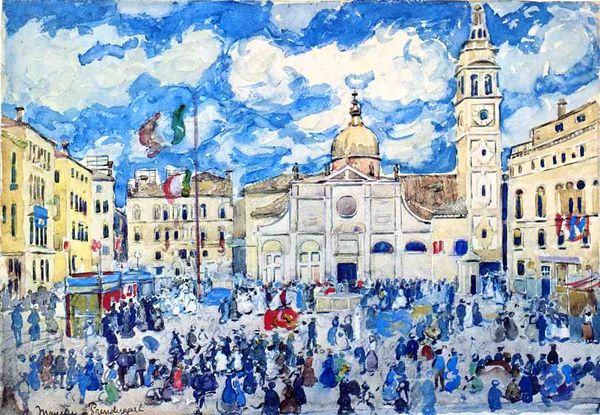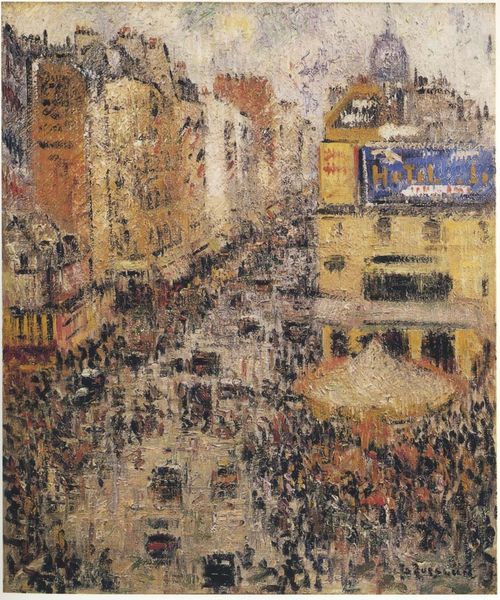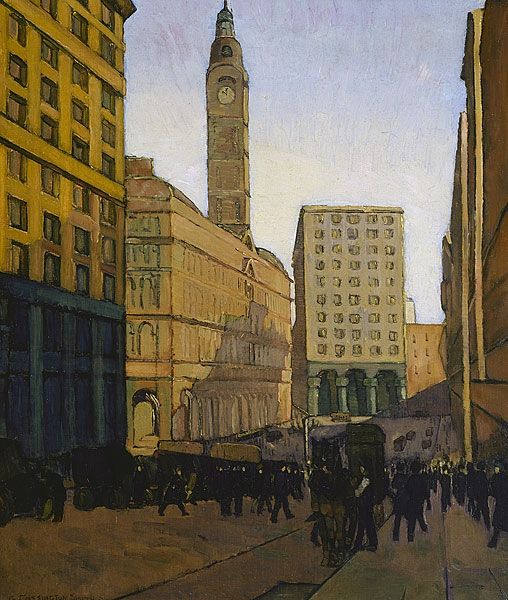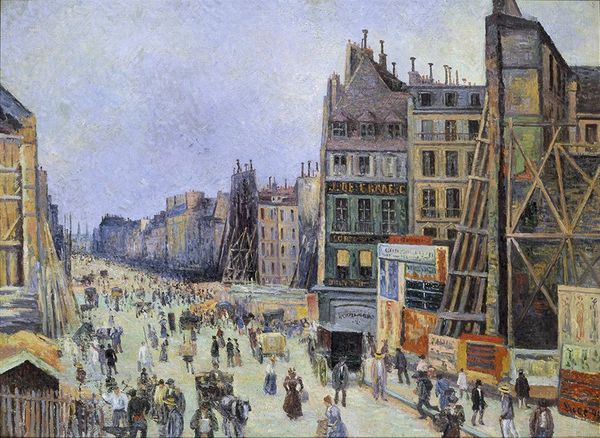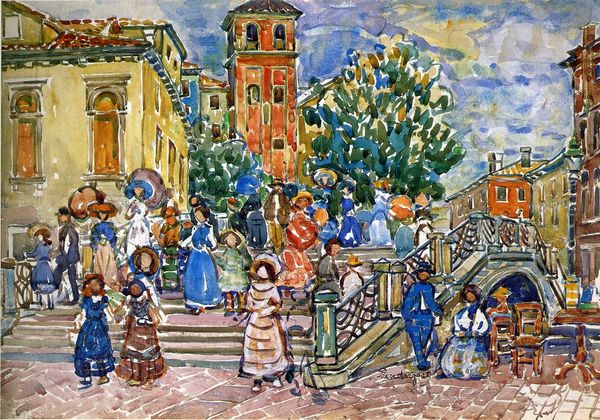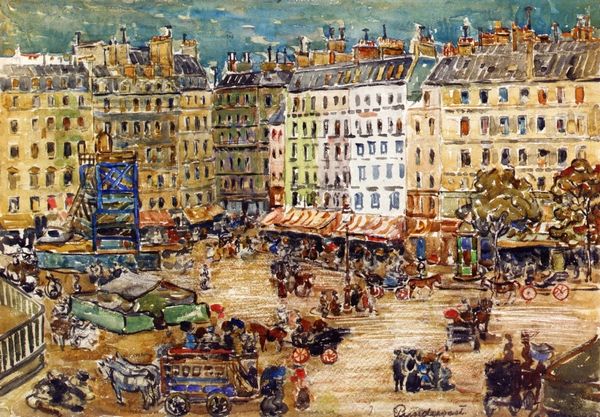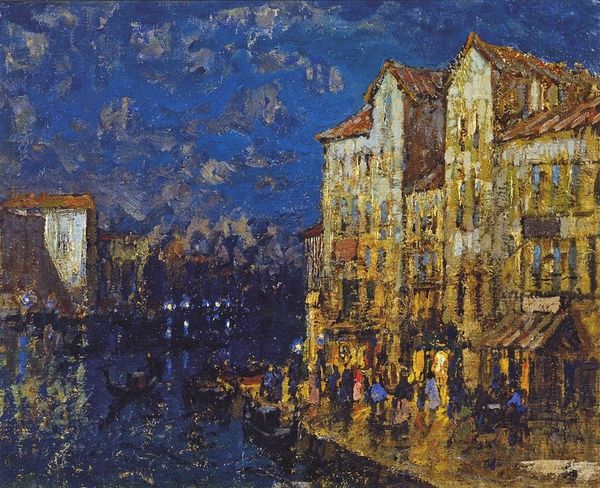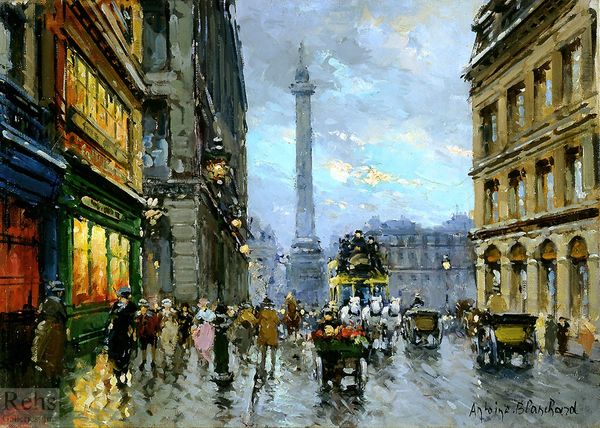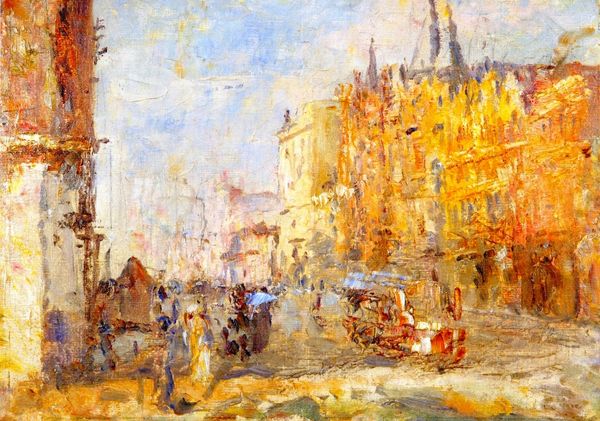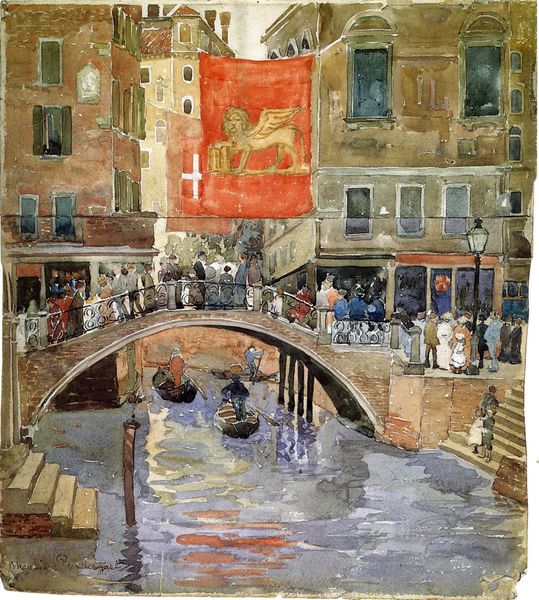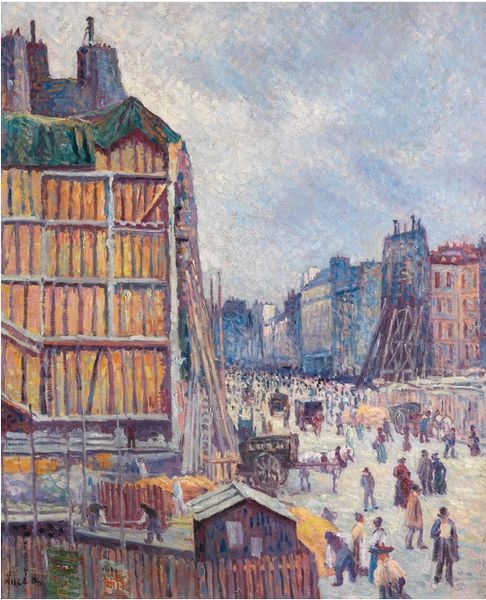
Dimensions: 55.88 x 38.74 cm
Copyright: Public domain
Curator: The artwork we are looking at is "San Maria Formosa, Venice" painted in 1912 by Maurice Prendergast, most likely en plein air. Editor: It gives such a wonderful sense of a bustling day in Venice. The light! But it's a hurried application, a study, a quick capture more than a finely wrought object. Curator: I see that observation stemming from the facture and construction of Prendergast’s watercolor technique, wouldn't you say? Note the broad strokes. They coalesce, yes, into a recognizable architectural landscape but do so with a degree of… expressive abbreviation. The overall composition employs planar organization in receding intervals. Editor: But let's think about that technique, more materially. Prendergast's choice of watercolor allowed for portability and speed, aligning perfectly with the Impressionist drive to capture fleeting moments and sensory experiences in public spaces. This method democratized landscape practice. Instead of painstaking renderings from sketches inside a studio, he could capture effects directly. Curator: And this, as you suggest, brings with it connotations of a more ephemeral reality, as though the architectural features are shifting ever so slightly to mirror the water's flux beneath them. I observe this is in alignment with Prendergast’s larger aesthetic program which aimed to construct an immediate visual experience and to convey the effects of memory in real-time. Editor: We cannot ignore, either, how that relates to leisure and the culture of tourism at the time. Venice became increasingly accessible in the early 20th century. And a study like this would have appeal for burgeoning markets as souvenirs capturing the splendor and picturesque scenes along the Grand Canal. It turns Venice into something for consumption. Curator: Indeed. It encapsulates both a concrete visual topography while simultaneously transforming that topography into a network of semiotic relationships, a sign for “Venice” itself. This is not merely an impression but an act of interpretation, an immediate reconstruction of memory upon encountering place. Editor: For me, the charm really lies in the apparent ease with which he creates such a complex scene, that fluid watercolor mirroring how water shaped Venetian life. It also emphasizes watercolor's crucial role, as well as Prendergast's contribution, in dissolving hierarchical notions about medium during that era. Curator: Ultimately, Prendergast uses this dissolution to generate an alternate visuality. By investigating structure and form, the materiality, in conjunction with its cultural-historical conditions, we come to better understand what such images signify and signify upon. Editor: Agreed. Thinking about those intersecting conditions really allows a fresh perspective on Prendergast's achievement here, I think. Thank you for sharing.
Comments
No comments
Be the first to comment and join the conversation on the ultimate creative platform.
